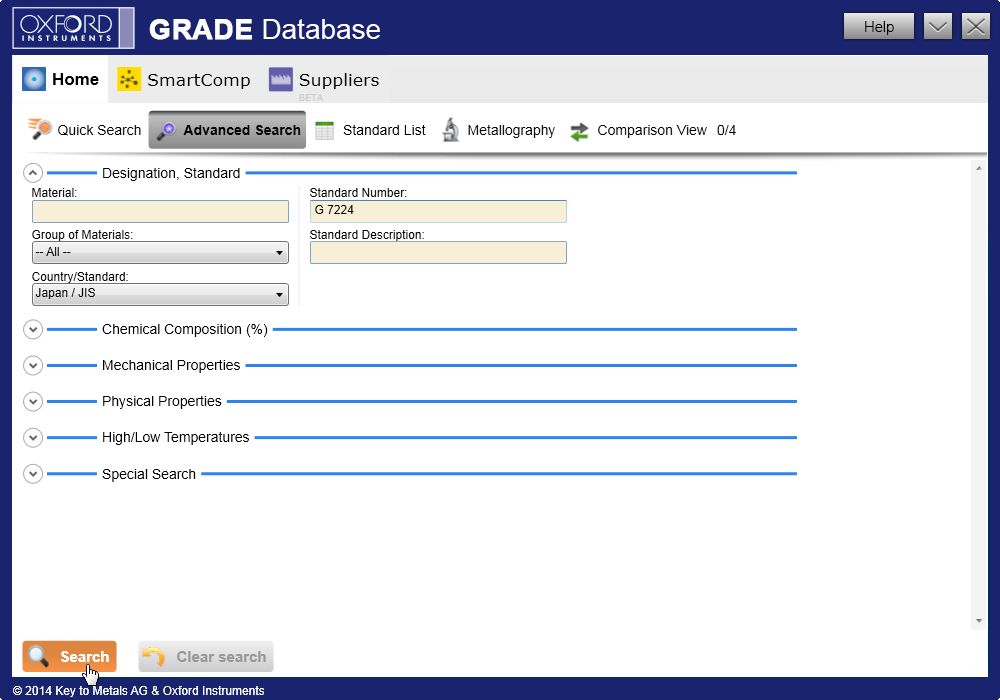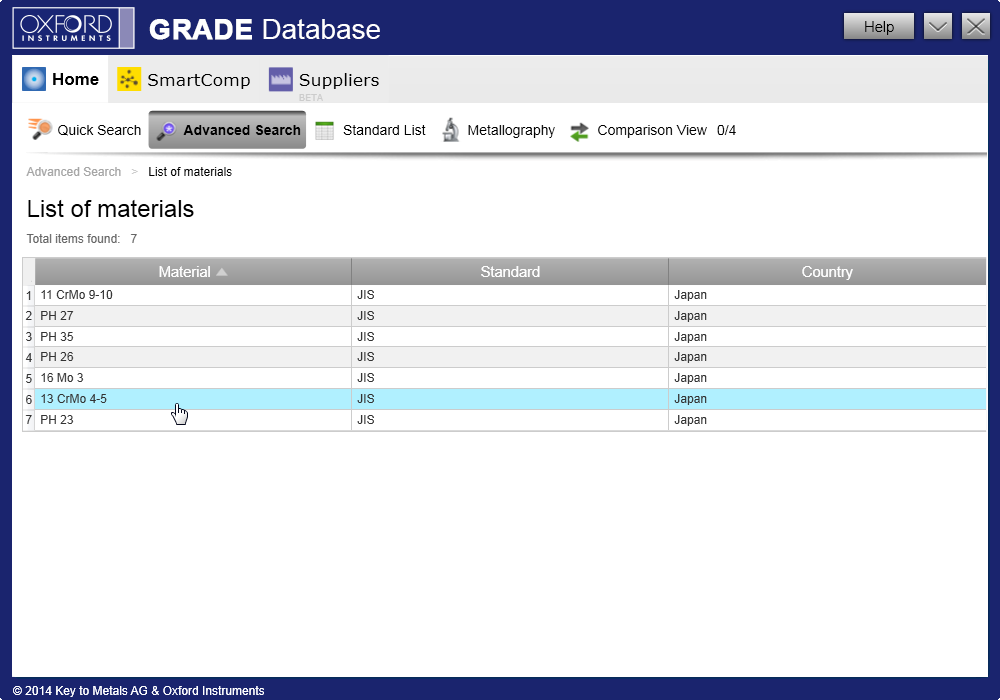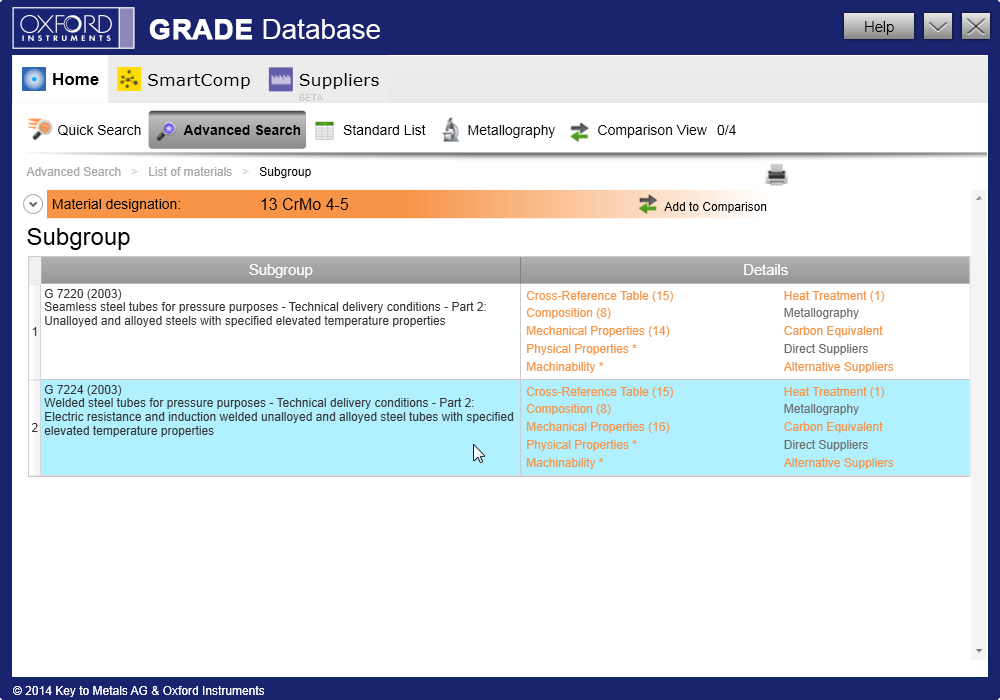
Tour 7: Searching by standard number
Standard specifications usually cover group of steels for some specific purpose, such as plates for pressure vessels, seamless or welded tubes for high or low temperature services, spring steels, etc. In most of specifications, chemical compositions as well as mechanical properties are given for several different steel grades.
In your daily work, it is often necessary
- to compare properties of materials specified in the one specific standard, or
- to analyze properties of two different materials nominally recommended for the same application, or
- to compare properties specified in different national standards (JIS vs. ASTM, for example).
Oxford Instruments Grade Database gives you broad insight to relations among specifications, materials and their properties. By using the right search option, you get your results in mere seconds!
Step 1: Choosing a search option
Suppose you would like to see properties of super-alloy sheets defined in G 7224 Japanese standard.
Your first step is choosing the right search option. To search by standard designation or standard description, use Advanced Search.
Step 2: Defining search criteria
In the field Standard Number you need to enter standard specification number. Optionally, you may also select country of origin from the popup list.

When you click Submit button, Oxford Instruments Grade Database search engine will select all Japanese materials specified by this standard within a few seconds.
Step 3: Selecting a material from the list of the results
Searching materials by standard number generally results in a list of materials that satisfy criteria you gave.
Depending on search criteria this list can be quite large, but in our example results list consists of 7 materials. By clicking on their designation you can retrieve and review their properties, cross-reference tables and more...

